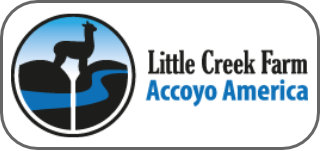- This post explains the maths behind the formula 3n × 2m (the number of unique zygotes) mentioned in last week’s post. more »
- Mating two superior animals together does improve your chance of producing superior offspring, but because of the completely random nature of gene assortment there is no way to predict which particular combination of genes will end up in which gamete. There is no way to control which egg is fertilised by which sperm, and ultimately chance and even luck still factor in the genome you are dealt. Some gamete combinations may be so detrimental that the embryo dies very early on. Two animals who together produced a superb animal may never do so again, but at the same time a disappointing mating outcome doesn’t mean future ones will be. So yes, there absolutely is a lot of randomness in genetic inheritance — far, far more than you may have thought. It is important to be aware of this randomness, and how, because of it, you do not have as much control over your breeding as you may think. But this is a blog about better breeding, and just knowing what you can’t control is a big step on the way to being a better breeder. We will be going deeper and deeper in our understanding, covering genes, statistics and selection strategies along the way. more »
- Fodder Solutions barley sprouts have been tested at every stage of growth. The peak spectrum of nutrients are available at the 6 day growth stage, this is when the barley sprouts are harvested. The nutritional breakdown of the barley sprouts shows that the sprouts are very high in energy and protein and contain sufficient of these to meet the needs of most stock. Barley grass is considered the most nutritional of the green grasses containing an abundance of nutrients unsurpassed by any other type of grass. The benefits of fresh green feed such as barley grass have been well documented over the past 50 years. Barley grass has shown to increase the overall health of the animal through better digestion of the hay and grain. While overall wellness is the most noted result, studies indicate improved performance results in other areas as well. Not only will animals be healthier but also they will experience: Greater energy and vitality Stimulates the immune response Reduction in antinutritional factors Antioxidant properties Independent research studies have been conducted by qualified academic institutes that prove the value of using barley grass. These studies show that barley grass is both beneficial to livestock and cost effective as a substitute for the traditional fodder supplements. more »
- South American camelids kept as zoo or farm animals often display skin lesions, the aetiology of which remains unresolved. Mostly, only a few individuals in a herd are affected. The empirical treatment consists of oral doses of zinc (Zn), and lesions usually improve over two to three months. It is unclear whether the syndrome is a Zn deficiency or a disorder that responds to supra-physiological systemic Zn concentrations (Rosychuk,1994). Although it has been mentioned that males and animals of dark fleece colour might be more susceptible (Fowler, 1989; Rosychuk, 1994), no systematic evaluation of factors that predispose animals to the condition has been published. more »
- Areas of discussion • Blue eyed whites are not deaf! • Alpaca is lighter than wool! Alpaca has a thermal insulation, 30% better than wool and Cashmere due to its hollow fibre! • Alpaca does not retain water! • Alpaca is 7 times stronger than sheep's wool! Alpaca has 3 times the tensile strength than wool! • Alpaca is prickle free! • People are not allergic to alpaca due to no lanolin/grease! Alpaca does not have lanolin in the fleece! • Alpaca resists solar radiation! • Alpaca is more durable than sheep's wool! more »
